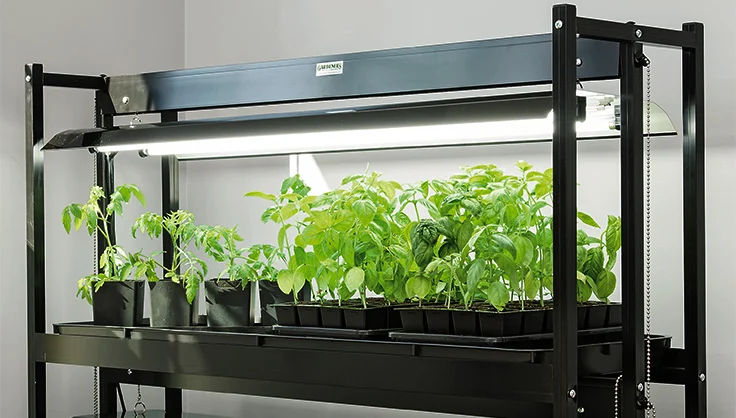LED Grow Lights for Indoor Plants have become an increasingly popular choice among gardeners, especially because of their low heat production and comparatively low running costs. Various options exist, from screw-in LED bulbs to stand-alone lamps. There are even compact seed-raising kits and high-intensity commercial greenhouse systems. This article will outline some of the benefits of LED grow lights for indoor plants and give you a basic understanding of how they work.
LED Grow Lights provide a full spectrum of lights, including red and blue light. Both promote the growth of chlorophyll in plants and promote the production of blossoms in flowers. Because LED lights are customizable, you can easily choose the spectrum, intensity, and frequency of light your plants receive. LED lights are also more energy-efficient and last longer than incandescent bulbs, so you can expect to save money over time.
LED Grow Lights have a wide range of benefits. Unlike ordinary lights, LEDs provide light that matches the spectrum of sunlight. While normal LEDs emit red light, the wavelengths of light required for plant growth are much smaller. LED grow lights need to provide both red and blue light in order to give your plants the best chance of a successful harvest. But these types of LEDs are not perfect for all applications. If you have a large plant collection, you’ll need more than one type of light.
You can place LED Grow Lights close to your plants or high above them to increase the intensity of light. While this is advantageous, you should also take care to avoid placing them too close to the plants. LEDs emit high amounts of UV radiation, so make sure to protect yourself from the ultraviolet radiation rays that they emit. Aside from UV radiation, LED grow lights can get hot if placed too close to plants. It’s also important to note that the distance between the grow light and the plant should be at least two feet.
You should also consider the number of plants you intend to grow. This will help you choose the best grow light for your plants. Keep in mind that PAR is the measure of light intensity. Plants need specific amounts of light to grow. You can find out the PAR value by using a simple PAR meter. Measure the PAR levels of various areas in your indoor garden. It will also help you adjust the intensity of light to suit the plants.
While fluorescent lights are better for beginning gardeners, they may not be as beneficial for seedlings or plants that have not been fully grown yet. Instead, grow lights that contain two T12 fluorescent bulbs can be effective for year-round growing. LED Grow Lights For Indoor Plants


